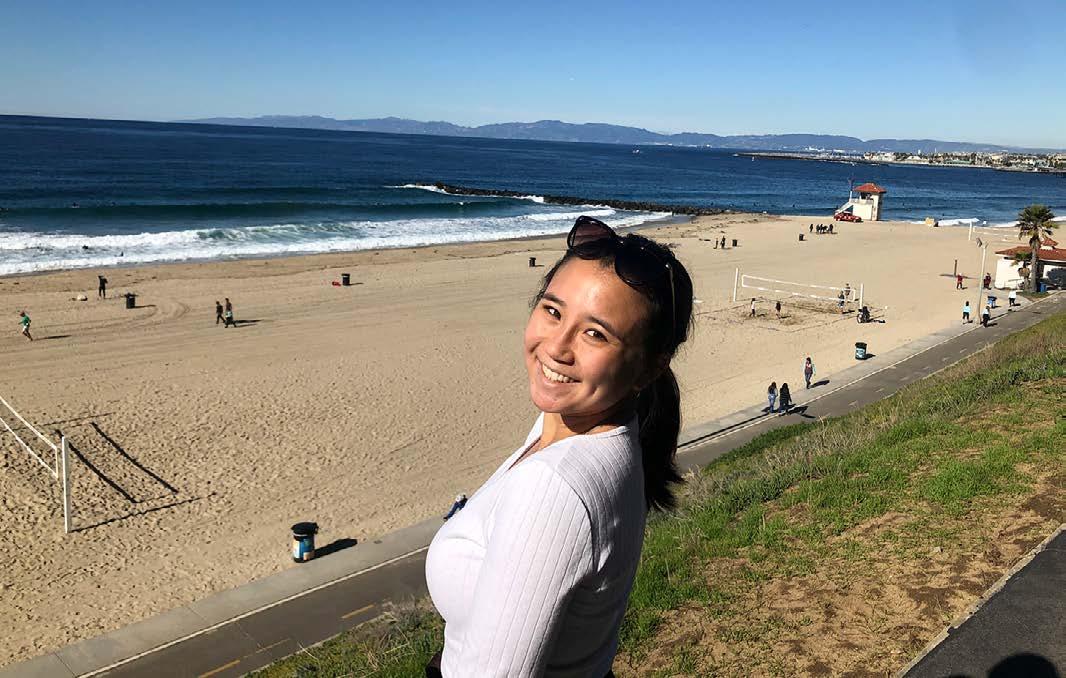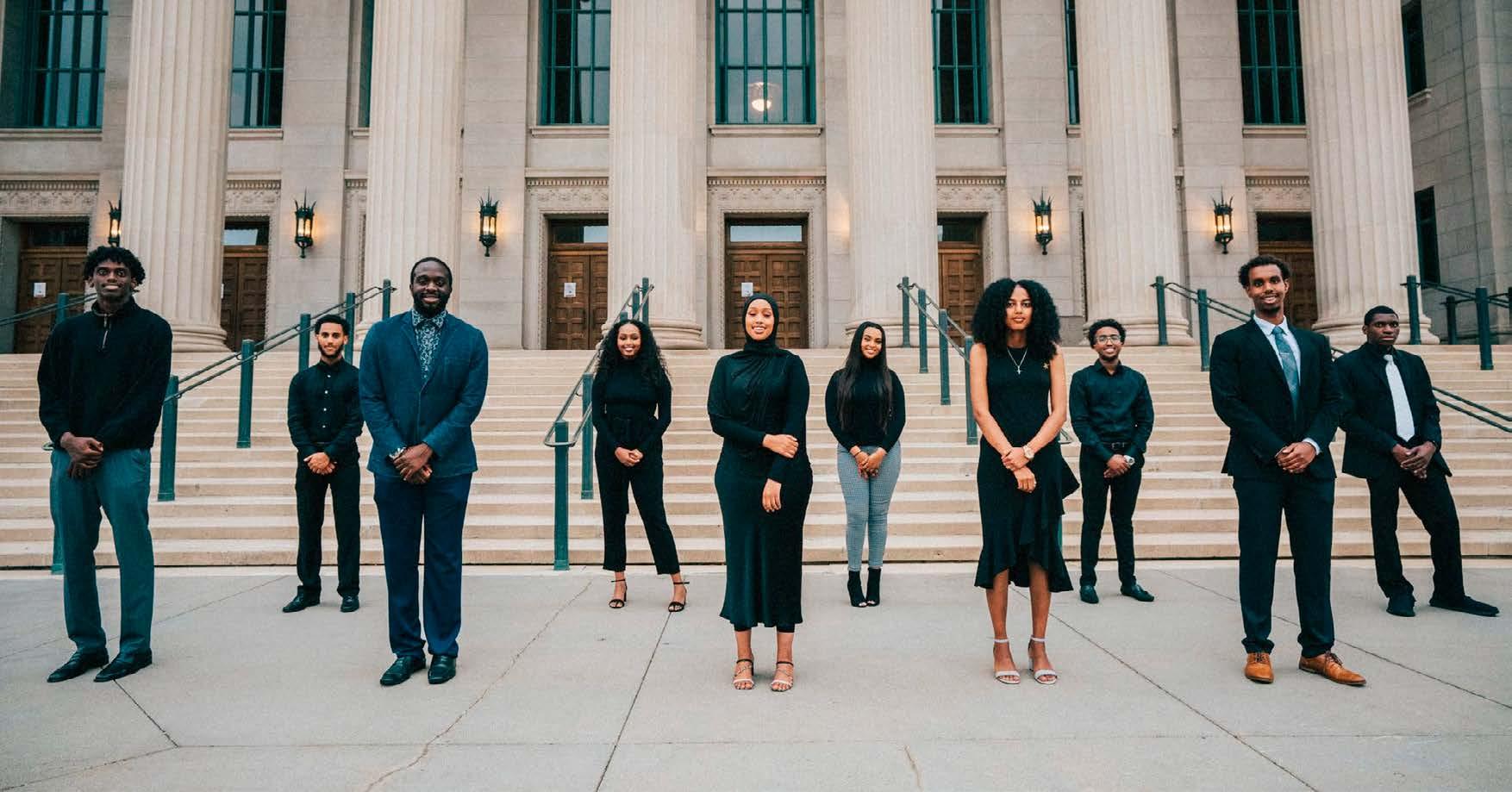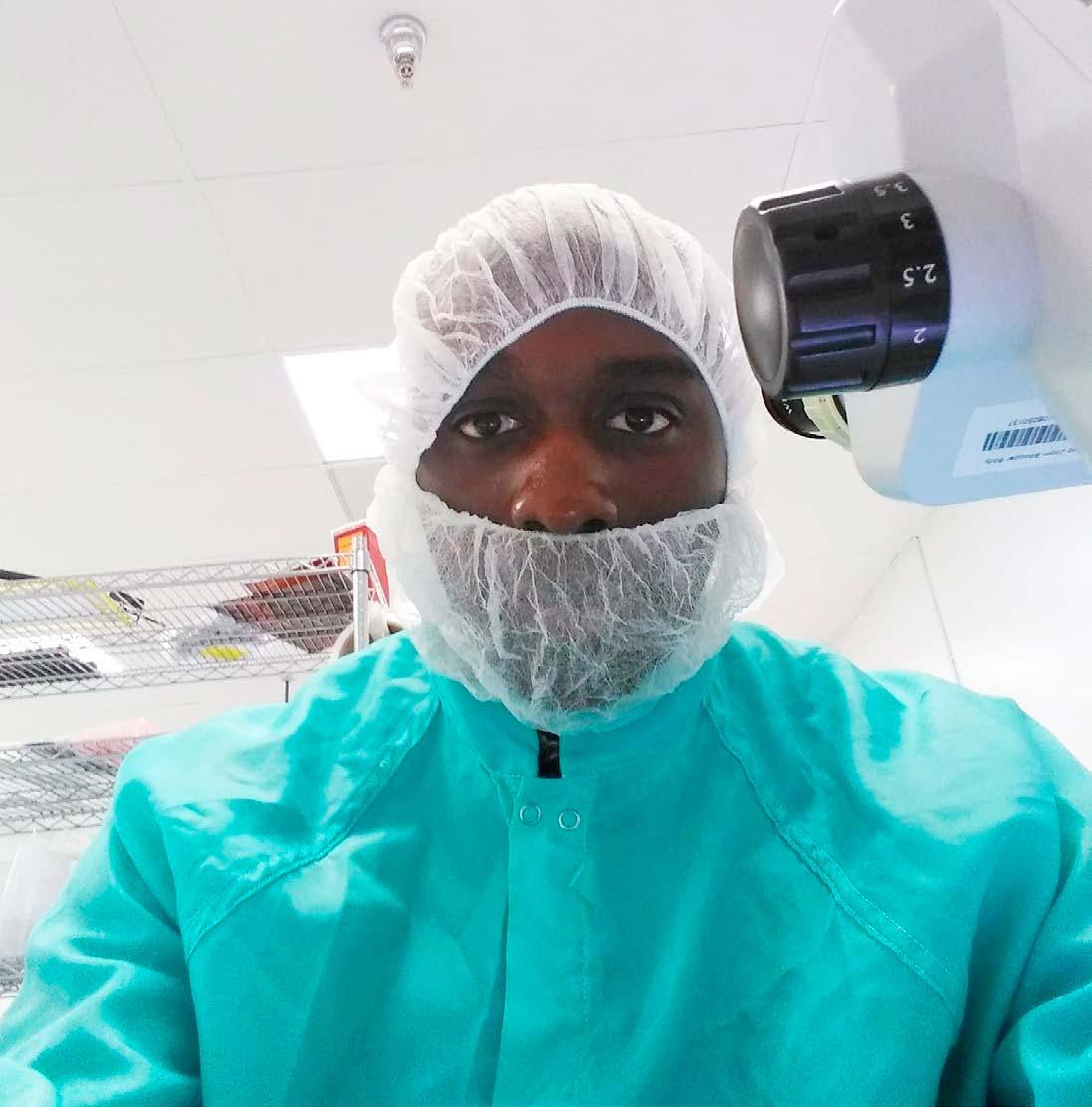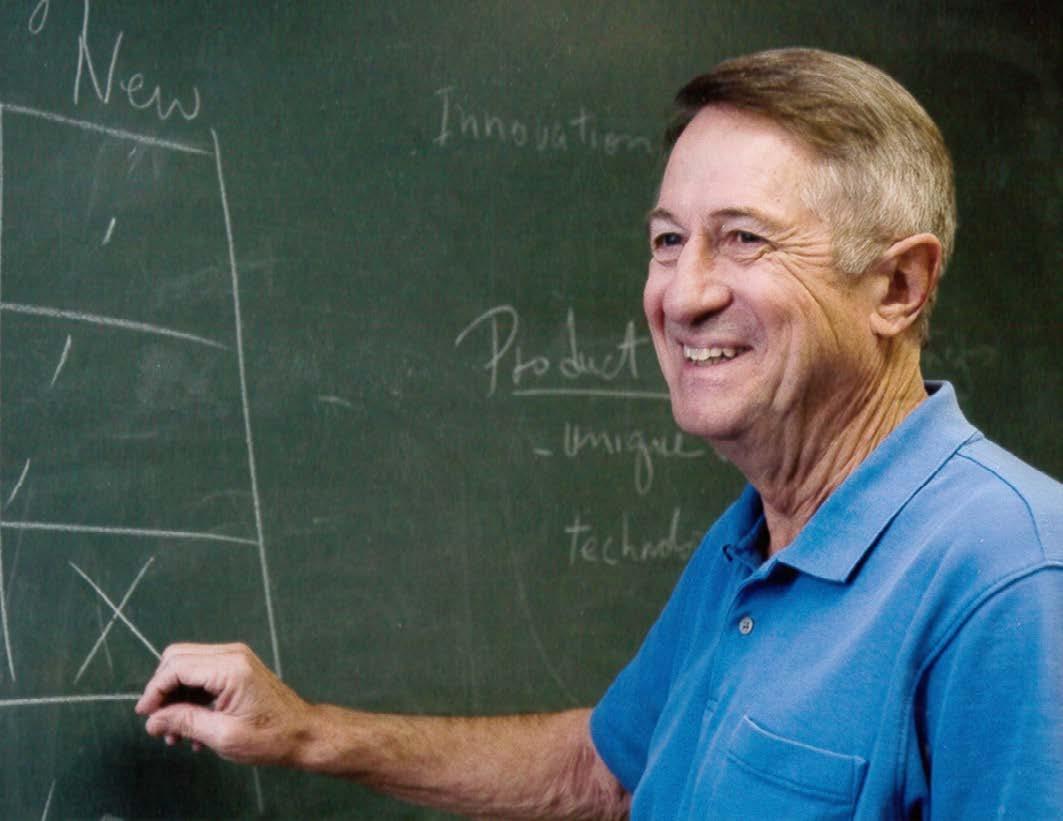
11 minute read
FEATURES
from Inventing Tomorrow Winter 2021
by College of Science and Engineering at the University of Minnesota
Doing what they can to guide others fuels three students
What’s in an identity? A lot, and yet some people don’t let their identities define them or hold them back. Instead, they use who they identify as—be it woman, man, bi-cultural, immigrant, tall, short, quiet, etc.—to make the world a little easier to navigate for others.
In a year filled with so much turmoil, we found three College of Science and Engineering students at the University of Minnesota who are doing just that.
These future engineers— Allison Chang (EE ’21), Pauly Soulia (ME ’21), and Sylvester Nwosuji (BME M.S. ’21)—stood out because of their tendency to put others first. They make it a point to serve as mentors, symbols of hope, and advocates for their peers across the college. They rejoice in bringing others, especially the generation coming up behind them, into their wonderful world of science, technology, engineering, and mathematics (STEM).
BEACONS
ALLISON CHANG:
Sunshine state to snowy plains
Minnesota winters don’t bother Allison Chang. In fact, the electrical engineering senior, who was raised in California and Hawaii, frolics outside when the sun is bright and snow is on the ground. “The cold doesn’t really bother me,” she said. “The air reminds me of mountain air, and I really like that. It actually feels great to experience changing seasons. Except for the occasional thin sweater, I only had summer clothes before.”
Chang has also grown fond of the people she’s met in the Midwest. Over the past three years, she’s connected with supportive professors in her department and other young women across the college. The Society of Women Engineers (SWE) chapter and the 3M-sponsored SWEekend on the Twin Cities campus were her first face-to-face introduction to CSE. The Women in Science and Engineering (WISE) Living and Learning Community was her first home away from home.
“I toured other schools, but I just felt like the personality of everyone I

OF LIGHTWritten by PAULINE OO
met matched mine,” explained Chang, a recipient of CSE’s Skaar Family Scholarship and Boeing Scholarship. “I felt like I could really fit in the community here.”
Chang, who credits her high school biology teacher, Nicoline Chambers, for inspiring her to pursue engineering, made more friends by joining the IEEE Women in Engineering student organization. As co-president last year, her responsibilities included planning career development events and organizing STEM outreach activities to engage youth. This year, she serves as the group’s membership coordinator. When we bring women, people of color, and other minorities into STEM fields, we only get better.

ALLISON CHANG
The COVID-19 pandemic hasn’t stopped the IEEE members from gathering. Regular Zoom meetings, texting, and FaceTime bring them together. In April, for instance, a month after the University sent students home, Chang led a Zoom event with Brooksource on how to find and interview with companies that are still hiring for online summer internships.
“Being part of IEEE really helps me build my leadership skills on top of connecting with other women,” she said. “I’m really interested in leadership and getting an MBA in my future because one of the biggest problems I’m seeing right now is the lack of engineers and scientists in politics. Engineers and scientists need to have a seat at the table.”
Another significant concern on her mind—the lack of women in the field.
“I’m really passionate about building a community of engineers, and electrical engineers in particular, because the numbers are still not equitable,” she said.

According to the National Science Foundation, women’s share of bachelor’s level engineering degrees has only increased from 18 to 21 percent over the past two decades.

“When I told my mom I wanted to be an engineer, she expressed concern that although I may be capable, working in a male-dominated field may cause unneeded stress,” Chang recalled. “She was afraid that I would be taken less seriously than my peers and would have to fight an unnecessary battle. Gladly, I have been met, mostly, with only positive experiences. However, I don’t want other women to ever think that there is a position in the world that they are incapable of holding. It has been proven that more diverse teams find more creative solutions.”
Engineering, after all, Chang noted, is about problem solving.
“When we bring women, people of color, and other minorities into STEM fields, we only get better,” she said. “All engineers should be judged by their passion for problem-solving, their work ethic, and their ability to work in a team and not by their gender, color of their skin, or sexual orientation.”
Upon graduation this May, Chang will join Medtronic. She landed a full-time position among the first cohort of its Technical Leadership Rotational Program while completing a three-month virtual internship in summer 2020.
“It was an offer I could not refuse,” she said. “I am going to be traveling to a new team every nine months for two years to build up my network and to learn how many of the company’s businesses work. The goal is to help speed up my path to leadership positions and develop my leadership skills through private and group training along the way.” PAULY SOULIA:
Of land and heritage
For Pauly Soulia, life and land are interconnected. And those of us privileged to walk on this planet and breathe the air it provides have a right to keep it healthy for generations to come. His life’s vision is clear: “I want to help protect the land that we live on.”
The mechanical engineering junior, who enjoys hiking and canoeing in the northwoods of his home state of Minnesota, is looking at a future in which STEM degree. he can implement more efficient forms of renewable energy, eliminate plastic pollution in the ocean, and remove harmful aerosols in the atmosphere. “As a child, I was interested in sustainability in the environment and I did well in STEM subjects,” Soulia explained. “My parents were pretty open about what I could study, but I knew that for the problems I was interested in solving, engineering was the way to go.” Soulia’s decision to come to the University of Minnesota was “a happy coincidence” made easier with financial aid, including CSE’s Frederick McKinley Jones Scholarship. In addition to being close to family in the suburb of Roseville, the Twin Cities campus offered a good engineering school and sat squarely in one of the largest urban areas in the Midwest for indigenous people.
Nagi Ohitika is Soulia’s Dakota name. It means “strong spirit.” Soulia received it when he was 18, right after graduating high school. But ties to his native ancestry go back to sixth grade—when his mom found her birth mother in South Dakota on Lake Traverse Indian Reservation, which is home to the Sisse-
PAULY SOULIA
ton Wahpeton Dakota people. During regular visits to see his grandma and uncles, Soulia always left more intrigued about his heritage. It’s no wonder, today, he is so open about sharing his identity. In fact, he’s keen on using it to pave a way for others in his community to not just fit in, but thrive as well.
One way he’s doing that is through the UMN American Indian Science and Engineering Society (AISES). The chapter was established in 2014 but suffered from a lack of membership. Five years later, Soulia and a couple of peers decided it was time to jumpstart it as a means to connect with STEM professionals locally and nationwide, and as a way to bolster the University’s enrollment.
“There is a strong indigenous presence on campus because there are people who care enough to build community and preserve indigenous space for students on campus,” he said. “But the indigenous population while I have been a student has always been less than one percent at CSE and the U, which is kind of backwards because this entire campus is built on stolen Dakota land and we’re adjacent to a major city with indigenous people— and all these charter schools with indigenous kids ready for outreach.” Visit days and tutoring sessions were part of the 2020 plan for AISES under Soulia’s leadership. Then the pandemic hit. “My hope is to offer them when we can,” he noted. “Right now, we’re all kind of in limbo. But it’s important to show kids what’s possible—that someone who looks like them can succeed in a STEM degree. I struggled with imposter syndrome when I first came to the U. I kept thinking: Do I even belong here? Can I do what everyone’s doing, like building robots? If I can feel this way as an inner-city kid from an upper-middle class family, I can only imagine someone from the reservation having the same feelings.”


This leads us back to Soulia’s life vision. In his wish to protect our lands dwells a hope—he calls “lofty”—for all who live

on it. “Feeling included, or like you belong, is a basic human thing,” he said. “The more we can empathize with that and do something about making things more equal or fair when we see injustice, the more we can help everyone understand that everyone—each one of us— deserves the same kind of treatment.”

All photos courtesy of Pauly Soulia

SYLVESTER NWOSUJI


All photos courtesy of Sylvester Nwosuji

SYLVESTER NWOSUJI:
African roots, global view
As a child, Sylvester Nwosuji Jr. liked tinkering with things. When the TV wouldn’t work, for example, he would think of ways to fix it. “Every time I was successful, I imagined what else my brain could do,” said the graduate student in biomedical engineering, with minors in electrical engineering and industrial and systems engineering.

That curiosity led Nwosuji, who was raised in both Enugu State, Nigeria and Columbia Heights, Minnesota, to discover that he was pretty good at math and science too. Nwosuji chose the pre-med track during his undergraduate years at the University of St. Thomas. However, his thoughts of becoming a doctor evolved prior to earning his degree in neuroscience with minors in mathematics and physics in 2019.
“When I heard about biomedical engineering in my sophomore year, I couldn’t believe it,” he recalled. “There was actually a way to combine engineering and medicine. I remember spending many nights just reading up about this field and watching a lot of videos just to learn more about it. I even found a mentor, a biomedical engineer at Integer, a company in Plymouth [Minn.] to answer all my questions about the field, be a support system, and give me career guidance. I later joined him as another graduate student in the biomedical engineering program at the University of Minnesota.”
Today, Nwosuji eagerly shares this passion for his newfound field—and STEM in general—with others. Being an active role model is one way he’s done this.
Nwosuji is a teaching assistant in the 2000-level “Programming for Biomedical Engineers” course for undergrads, and he serves as Academic Excellence Chairperson in the UMN National Society of Black Engineers (NSBE). “My role is to make sure that Black engineers are well prepared academically and career wise,” he explained. “For example, I planned and led a GRE prep event. I give tips and tricks on time management and how to prepare for grad school through my other events, which I can personally share because I have been through the process of being a prospective graduate student.”
Mentoring children is close to his heart as well. Whenever opportunities arise to do this, he jumps at it.
“I feel like our youth have so much to give, and there is untapped potential especially in the Black and brown communities,” said Nwosuji, who lost his father when he was 13 years old. “When I was young, I didn’t see a lot of Black men in healthcare until I was older. Now I have a platform to inspire kids to do STEM, healthcare, or anything they put their minds to. This is important to me because someday it will be me passing the baton and them taking over what I do when I get older.”
Besides NSBE, Nwosuji divides his free time among several groups on campus, including the African Student Association, Black Graduate and Professionals Student Association, Society for the Advancement of Chicanos/Hispanics and Native Americans in Science, Community of Scholars Program, and other multicultural organizations.
“I like to interact and be in the company of others who are similar to me, and also different from me,” he said. “I feel like sometimes the biases we have limit us— and we only see ourselves fitting in with one group. I don’t limit myself. For me, it’s important to listen to the issues of people with identities outside of mine so I can be an ally and stand in solidarity.”
In a year of discontent—brought on by a pandemic and fueled by racial injustice and uprisings, as well as political polarization—Nwosuji’s open-mindedness is refreshing.
“I’m trying to make sure that even if an injustice didn’t happen in my own backyard, I still fight for the people and the communities who face it,” he noted, “whether they’re here in the U.S., in Nigeria, or somewhere else in the world—in every way I can. Without overstepping boundaries, each of us can learn what we can do to be helpful.”






